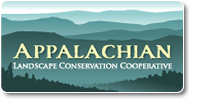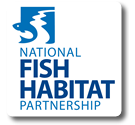Raccoon Creek Stream Restoration for Imperiled Aquatic Species in lower Etowah River Drainage
| Project Start Date | |
|---|---|
| Project Leader | |
| Organization |
This project restored stream areas of Raccoon Creek for imperiled aquatic species in lower Etowah River drainage, Georgia. This project has resulted in several new partnerships, including a collaborative planning workshop for Paulding County held by SARP and the Southeast Watershed Forum.
Background
The Raccoon Creek Watershed is one of several high priority Etowah River tributaries The Nature Conservancy (TNC) and the U.S. Fish and Wildlife Service (USFWS) have identified for aquatic and terrestrial habitat restoration, management, and protection. Raccoon Creek provides the only known habitat for the Etowah darter downstream of Lake Allatoona and it supports the largest known population of the federally threatened Cherokee darter in the species’ genetically distinct lower evolutionary species unit. In addition to listed species, the current Raccoon Creek aquatic community is comprised of 43 native fishes, 13 of which are endemic to the Mobile Basin or a smaller geographic area. The Raccoon Creek Watershed is also home to one of the largest remnant montane longleaf pine habitats in Northwest Georgia. Montane longleaf is listed as a high priority habitat for restoration and protection in Georgia. The montane longleaf pine ecosystem supports two additional Georgia rare species, the fox squirrel and Bachman’s sparrow, not to mention the incredible habitat it provides for a plethora of migratory birds.
TNC has been working since 2005 in partnership with USFWS, DNR, and Paulding County to acquire critical tracts of land throughout the upper Raccoon Creek watershed. These USFWS grants, in conjunction with numerous other private grants and dedicated state and county funding, have led to the acquisition of over 11,900 acres, which has resulted in the permanent protection of 34% of the 35,000-acre Raccoon Creek watershed. However, once the creek departs state and county owned land it traverses numerous privately owned tracts before its’ confluence with the Etowah. On its journey through these private lands the creek and must cope with poorly designed road crossings, stormwater runoff, stream channelization, agricultural runoff, and power line management practices. Together these practices have resulted in degraded riparian and floodplain buffers, destabilized streambanks, and unstable stream channels.In order to improve the overall habitat in the Raccoon Creek watershed TNC has been partnering with DNR, USFWS, and Paulding County to identify future protection and restoration sites and educate local landowners on how the management of their property impacts the watershed. In 2008/2009 TNC identified and prioritized major stream crossings inhibiting natural fish passage along the mainstem of Raccoon Creek in Paulding and Bartow Counties and began collaborating with Georgia Power on a plan to restore a 6,441 linear foot reach of Raccoon Creek impaired by a power line right-of-way just downstream from the Paulding County WMA. A conceptual design for the site revealed 9 project sites that needed to be restored in order to recreate a stream buffer, diversify habitat, and create a stable dimension, pattern, and profile which would reduce future erosion and sedimentation, and improve water quality, connectivity, and in-stream aquatic habitat. This restoration resulted in 5,750 linear feet of buffer planted and 2,250 linear feet of stream banks restored. TNC established a 25 year encroachment agreement with Georgia Power to ensure the long term success of the Georgia Power restoration site project.
TNC received PFW FY 2011 and 2012 Landscape-scale Grants, as well as a FY2011 Southeast Aquatic Resources Partnership Grant (SARP) to complete the remaining Georgia Power restoration sites and continue conservation and protection work throughout the Raccoon Creek Watershed.
Completed
Construction
Georgia Power Right of Way Restoration Site
C.S. Britton Inc. restored and removed the seasonal fish passage barrier (Site 8) on the Braswell Mountain Road box culvert. This second and final phase of construction was relatively complicated and expensive given it involved rerouting the mainstem of Raccoon Creek at both sites 5 and 6. During construction a total of 1,700 linear feet of stream were restored/recreated.

- Restoration Site 3
Site 3, which was originally constructed in January 2011 showed some signs of erosion on the upstream side of a major bend so the contractor increased the bankfull bench and installed coir logs and root wads at the toe of the slope in order to better protect the bend from erosion during high water flows.

- Site 5 Restoration
Site 5 involved slightly moving the existing channel as well as installing 3 rock veins and several series of brushtoe, root wads and coir logs in order to prevent future erosion. A 50 foot channel within a channel riffle was also created using natural river boulders and cobble with the goals of increasing darter habitat and recreating the typical North Georgia riffle-run-pool sequence.

- Site 6 Restoration
Site 8 involved removing over 25% of a concrete lip at the downstream end of the Braswell Mountain Road multi-box culvert. The lip was cut flush with the bottom of the culvert in order to provide seasonal fish passage during low flows.
20 Coca Cola and Nature Conservancy volunteers planted a 30 foot buffer around Georgia Power restoration sites 3, 5 and 6 using a variety of 400 native trees.
Monitoring
 Monitoring data includes substrate, presence of algae and Podostemum (which is associated with high abundance of macroinvertebrates), embeddedness, riffle locations, riffle widths, riffle lengths, lengths between riffles, presence/absence of fish, and abundance of target fish species. Water levels were extremely low during our sampling period making overall sampling extremely limited and challenging, which lead to drastically low fish numbers compared to previous years. Most riffles that had been previously sampled for several years were completely dry. The control site even lacked running water between pools. Rainfall has picked up significantly over the past year so we expect to see fish numbers rebound during August 2013 sampling. The goal is to use the restoration results to provide useful in stream restoration design parameters, which can be incorporated at regional and/or nationwide sites which contain occupied habitat for critically imperiled species.
Monitoring data includes substrate, presence of algae and Podostemum (which is associated with high abundance of macroinvertebrates), embeddedness, riffle locations, riffle widths, riffle lengths, lengths between riffles, presence/absence of fish, and abundance of target fish species. Water levels were extremely low during our sampling period making overall sampling extremely limited and challenging, which lead to drastically low fish numbers compared to previous years. Most riffles that had been previously sampled for several years were completely dry. The control site even lacked running water between pools. Rainfall has picked up significantly over the past year so we expect to see fish numbers rebound during August 2013 sampling. The goal is to use the restoration results to provide useful in stream restoration design parameters, which can be incorporated at regional and/or nationwide sites which contain occupied habitat for critically imperiled species.
Georgia Power Right of Way Fish/Habitat Sampling - (private funds were used to fund sampling)

- Sampling at Site
Partnership
Southeast Aquatic Resource Partnership (SARP)/Southeast Watershed Forum (SEWF)
TNC has been collaborating with the SARP and the SEWF to host a conservation planning workshop with Paulding County in July of 2013. SARP and the SEWF received a grant from the Environmental Protection Agency (EPA) Southeastern Regional Targeted Watershed Initiative to better align watershed and conservation planning with county land use planning to ensure long-term benefits for prime habitat and water quality. While TNC and partners have made significant strides in terms of conservation planning and land protection, we have not had a chance to focus directly on county land use planning and identify specific land use practices that could be implemented to protect and improve the watershed. We see this partnership as a valuable resource to fill that void. Results of the July 2013 planning meeting will be incorporated into the larger Raccoon Creek Conservation Plan, which is being used to guide and document all of the partners work in the watershed.
Education and Outreach
School Outreach - Kennesaw State University worked with DNR, TNC, and five Paulding County High Schools to begin developing a high school science curriculum based on the native aquatic and terrestrial habitat in and around Paulding County. The purpose of this project is to raise the visibility of the resource by developing an ongoing, inquiry-based environmental science curriculum in the five Paulding County high schools that engages both students and teachers in watershed conservation. The curriculum will include hands-on, real-world experiences for students where they compare biological, physical and chemical attributes of the Raccoon Creek watershed with similar attributes in three other Paulding County watersheds experiencing human impacts ranging from urban development to agricultural activity. Data gathering will be linked with monitoring activities of the Paulding County Water System. The program will engage over 1000 students per year in conservation activities and the curriculum developed can serve as a model for other systems.
 Legislative Tours - USFWS hosted a tour of the Raccoon Creek Georgia Power restoration site for representatives of Congressman Tom Graves, Senator Saxby Chambliss, and Senator Johnny Isakson (Figure 10). The goal of the tour was to educate elected officials on the importance of key watersheds and restoration and protection work within those key watersheds. Representatives toured 6 of the 9 restoration sites and seined riffles in order to view the native biodiversity.
Legislative Tours - USFWS hosted a tour of the Raccoon Creek Georgia Power restoration site for representatives of Congressman Tom Graves, Senator Saxby Chambliss, and Senator Johnny Isakson (Figure 10). The goal of the tour was to educate elected officials on the importance of key watersheds and restoration and protection work within those key watersheds. Representatives toured 6 of the 9 restoration sites and seined riffles in order to view the native biodiversity.
SARP/SEWF Tour- TNC hosted a tour of the greater Raccoon Creek watershed for representatives of SARP, the SEWF, the Mountain Conservation Land Trust, and Georgia’s Environmental Protection Division. The goal of the tour was to educate partners on all the existing and future work in the watershed and begin developing a plan to replicate the Raccoon Creek model in Smithwick Creek in the Upper Etowah with the Mountain Conservation Land Trust as the on the ground lead.
Due to its relatively small watershed, Raccoon Creek is one of the few places in North Georgia where TNC, USFWS, and DNR have the opportunity to accomplish landscape-scale conservation within an entire watershed.
TNC believes Raccoon Creek is a great example of a watershed where we can show governments, communities, corporations, and other stakeholders how natural solutions can help us adapt to present and future impacts. The Raccoon Creek project clearly demonstrates the relationship between natural resources, conservation, and ecosystem services. Here, because of monitoring efforts of multiple partners, key land protection coupled with restoring and improving key habitats will provide significant data for use in our public outreach and education efforts related to watershed conservation. We hope this effort may also serve as a demonstration site for others involved in both watershed and terrestrial conservation efforts in the State and region. TNC is currently working to bring partners together in the Upper Etowah to replicate the Raccoon Creek project model in Smithwick Creek, another high priority Etowah tributary located in Cherokee County, just upstream from Lake Allatoona.
Associated Locations
| Town | zip code | county | state | congressional dist |
|---|
Barriers
| Name of barrier | Latitude | Longitude | FONS ID | FIS Project ID | FWS Acc. # |
|---|
Document Actions









